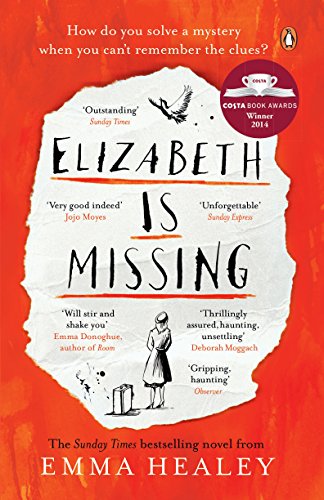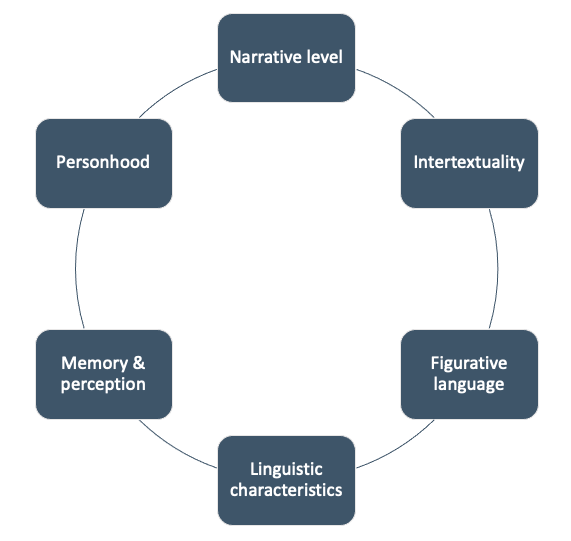“When I open my door I can hear a roaring noise. I can’t think what it is. It gets louder the further down the stairs I go. I stop on the bottom step, but I can’t see anything. I look in the sitting room. The roaring is even louder. I wonder if it is in my head, if something is coming loose. The noise swells and vibrates. And then it stops.
‘There. That’s your hoovering done, anyway.’ Helen stands by the dining-room door, winding up the wire on the vacuum cleaner.”
Elizabeth is Missing, by Emma Healey (2014, Penguin)

How does the extract above help you share or understand the character’s cognitive experience, her mind style? Our stylistic analysis would point to the following:
- the present tense and first-person pronoun I put the reader in the same time and place as the narrating character.
- iconicity, the representation of events in the order in which they are experienced by the narrator:
- the source of ‘the roaring noise’ is not revealed to the narrator or the reader, until another character, Helen, explains it;
- Helen’s speech is not introduced, but interrupts the narrative just as it interrupts the narrator’s thoughts.
- metaphors used to represent characters sensory experiences as tangible, kinaesthetic events e.g. something ‘coming loose’ in my head, noise ‘swells and vibrates’.
This brief example illustrates how fictional language can help readers share and understand the perspective and experience of characters with dementia.
We have selected a range of contemporary texts representing the interior perspective of characters with dementia, resulting in a dataset or ‘corpus’ of 350,000 words. Our corpus includes the following texts, in whole or in part, depending on the extent of prose from the perspective of a character with dementia:

The first stage of this project involves analysing the data qualitatively using frameworks drawn from cognitive stylistics to identify features which contribute towards the creation of dementia mind styles. In addition to the features highlighted in the brief analysis of the extract from Elizabeth is Missing above, these include:

The analysis stage also involves a quantitative analysis of the corpus of dementia fiction. By contrasting the narratives from characters with dementia with a reference corpus of general fiction (drawn from the British National Corpus), we can find out what is unique – or characteristic of – our dataset.
The outcome of the qualitative and quantitative analysis is a comprehensive account of how the cognitive experience of dementia is represented in contemporary fiction, found in Lugea (2022). But too much of literary-linguistic criticism finishes with an analysis that sits on a dusty shelf. The next step of this research project ascertains if the features found in the fiction actually effect real readers…
Key references:
Bitenc, R. (2012) ‘Representations of dementia in narrative fiction‘ in Cohen, E., L. Toker, M. Consonini and E. Dror (eds.) Knowledge and Pain. Amsterdam and New York: Rodopi, pp. 305-329.
Lugea, J. (2022) ‘Dementia mind styles in contemporary fiction’. Language and Literature. 31(2): 168-195.
Semino, E. (2007) ‘Mind style: 25 years on‘. Style 41 (2): 153-203.